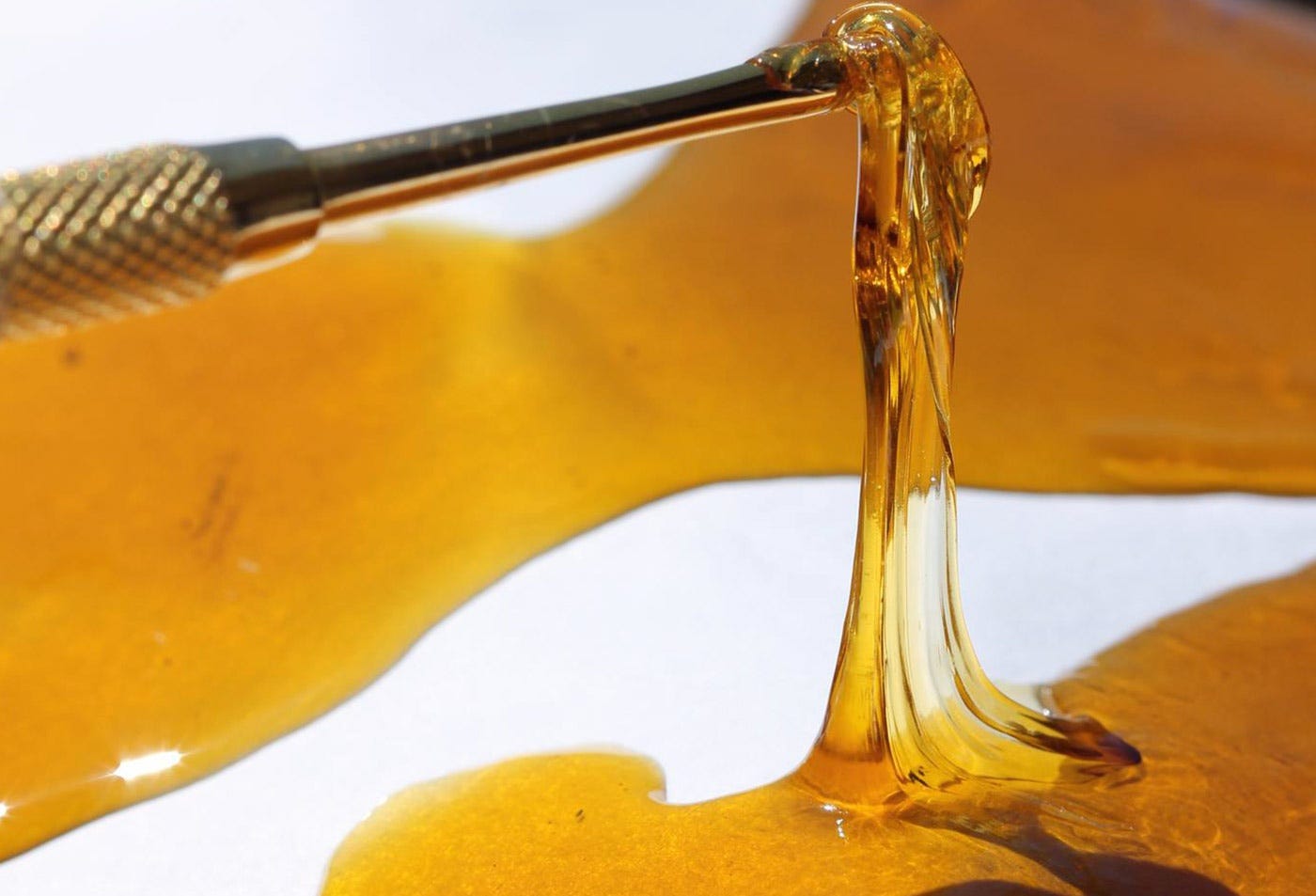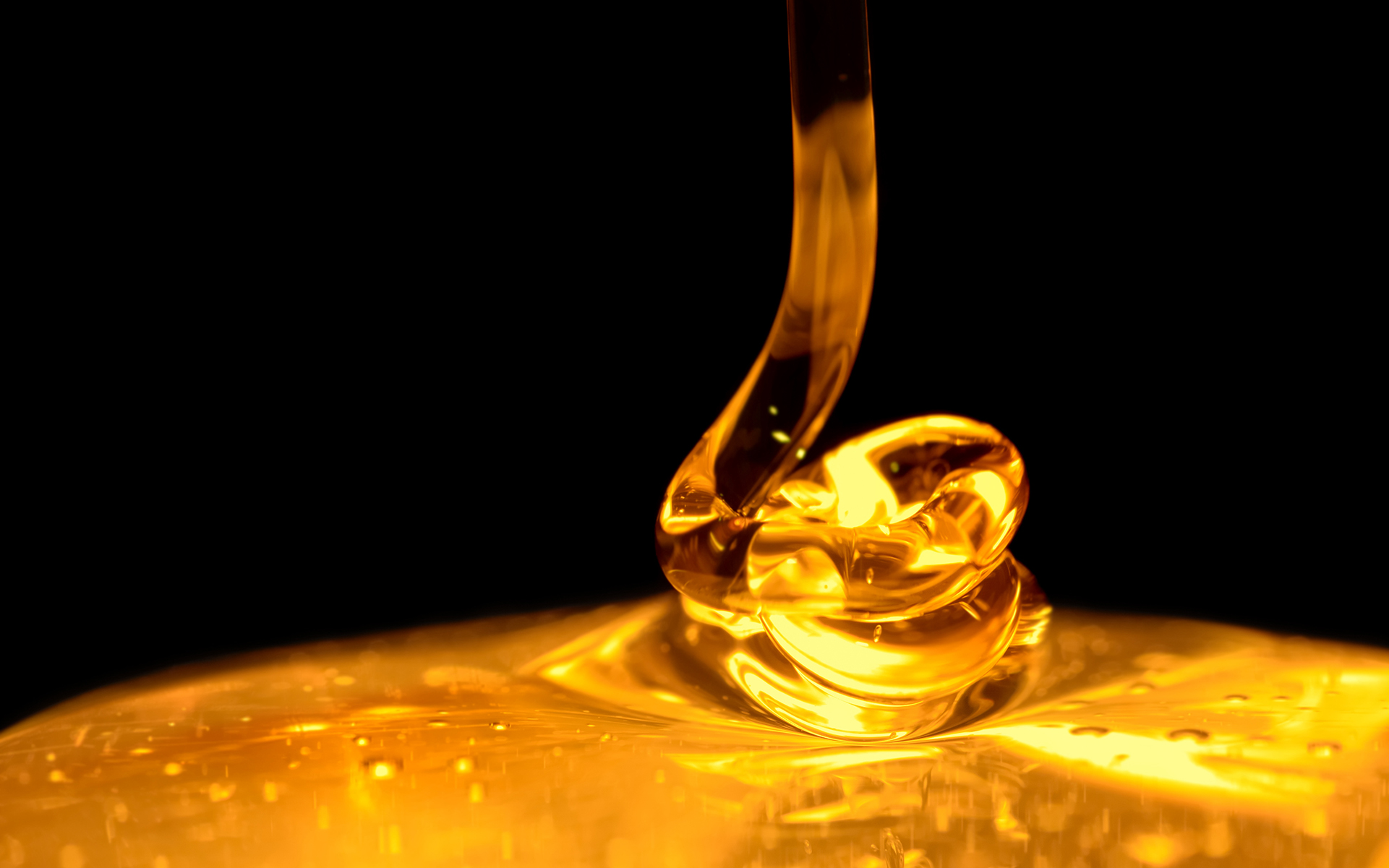Clear and golden. We can’t help but think of it like those slow-motion fast food commercials as it slowly drips from the glass syringe onto our nail as we inhale the smooth clean vapor. We’re talking about what THC distillates are and how to use them!
Cannabusiness has created some truly novel products in the last few years — from blunts to vape pens to concentrates to dabbing to THC and CBD strips, and everything in between. It seems like every other day, someone gives us another way to consume cannabinoids. Case in point: THC distillate.
You may not have heard of this cutting-edge product (it’s probably why you’re here, right?), but take our word for it, you’re going to want to try it.
What Are THC Distillates?

A distillate is the end product of a process called — wait for it — distillation (duh, right?). Distillation involves separating the chemical components from a liquid mixture by controlled boiling and condensation. If you’re at all familiar with moonshine, The Dukes Of Hazzard, or the hills of Kentucky, you’ve probably heard the words distiller, distillery, or even still.
That’s because humans have been using the distillation process to refine their alcohol for decades, if not centuries. So it’s really nothing new.
What is new, though, is applying distillation to cannabis plants and cannabis concentrates in order to extract the purest cannabinoids possible.
When we produce distillate, we’re taking pre-extracted concentrate oil and further separating to refine the cannabinoids, terpenoids, and flavonoids from the stuff we don’t want such as pesticides, plant matter, or other impurities.
When compared to the process by which we extract wax and shatter, it’s quite different. Distillate is made by a molecular distillation process, much like the process of distilling alcohol. The extracted material is heated to the point of vaporization, which causes decarboxylation (activation of THC), then the evaporated material is decondensed and collected.
Why People Love To Use THC Distillates
The first reason our THC distillates are so popular among patients is because of the potency. If a distillate were to test at 99% purity, this would mean that in a one-gram syringe of distillate you have 990 mg of THC out of the 1000mg. For those using distillates purely for medicinal purposes, the cleanliness of this type of purified THC is practically unmatched.
There are also several ways of consuming THC distillates including vaporizing, topping off your joint or bowl to smoke it, sublingually, or even as a suppository. It can also be used to make anything an edible, due to the THC being activated (decarboxylation). This type of cannabis is extremely versatile and can be easily incorporated into any form in which the user feels most comfortable consuming it. Additionally, because we are able to control the substance at a chemical level, we can also determine how much taste (if any) is given to the distillate by the reintroduction of terpenes.
Cannabinoid Process
Traditionally, there are two methods for creating concentrates from cannabinoid:
Wax and Shatter Method
The wax and shatter method is a chemical method for creating cannabinoid concentrates uses solvents, like butane, to extract the main components from the cannabis plant. A typical production technique of using solvents creates shatter and wax.
Using the wax and shatter method has a couple of drawbacks:
- The solvents leave residue in the cannabinoid concentrate.
- This process is very flammable and dangerous.
- Destroys the plant tissue.
If you are looking for really good shatter we recommend you to try HOG Shatter Pack.
Hash Method
The Hash method is a physical method for creating cannabinoid concentrates using pressure and rinse cycles instead of solvents. This method uses a rosin or sieving to separate the plant components to produce the concentrate.
But even the Hash method leaves impurities in the crude extract. These impurities have to be removed before the oil can be split into individual cannabinoids.
Distillation Process

Cannabis Distillation uses a unique process from other concentrates. Unlike the wax, shatter, and hash methods, Cannabis Distillation uses a natural physical way to separate and refine the molecules. This process involves extraction, winterization, decarboxylation, and distillation.
Crude Extraction
Once separated, the distillation process utilizes heat to vaporize cannabinoids, stripping the chlorophyll and plant matter from the cannabinoids. The distillation cooling system collects the pure cannabinoid vapor to create a clean, solvent-free, concentrated liquid.
Winterization
Once the crude extract has been separated, it goes through a winterization process to purify the extract of waxes, fats, lipids, and chlorophyll. The pure extract is then mixed with ethanol and placed in a cold environment for one to two days.
In the cold, the impurities solidify and fall to the bottom of the container. The crude extract then goes through a filtration system to remove the ethanol, restoring the extract to its pure form.
Decarboxylation
Then the extract must be decarboxylated for the THC acid to interact with the human body effectively. This process raises the extract’s temperature to activate the cannabinoids and remove the carboxylic acid from the cannabinoid chemical compound. Once this is done, the THC concentrate and CBD concentrate can bind to the nervous system receptors to provide medicinal benefits.
Distillation
The final process of distilling the extract uses vacuum pressure, heat, and evaporation to separate terpenes and cannabinoids. This separation doesn’t occur until the process reaches a boiling point. THC and CBD have different boiling points for extraction.
Once this step is complete, the extracts are ready for consumption. Although for CBD extracts, the concentrate might go through one more process to remove any traces of THC from the extract. CBD extracts that undergo this process are called Broad Spectrum.
Cons of Cannabis Distillation
While Cannabis distillation is the best method for creating THC and CBD extracts, it does have a few disadvantages:
- It is an expensive process requiring specialized equipment and lab technicians that can cost over $250,000 to implement.
- Terpene and flavonoid can degrade or be destroyed during the distillation process, often requiring products to add terpenes back into their extract.
- The distillation process doesn’t kill pesticides on the plant and can sometimes remain in the extract.